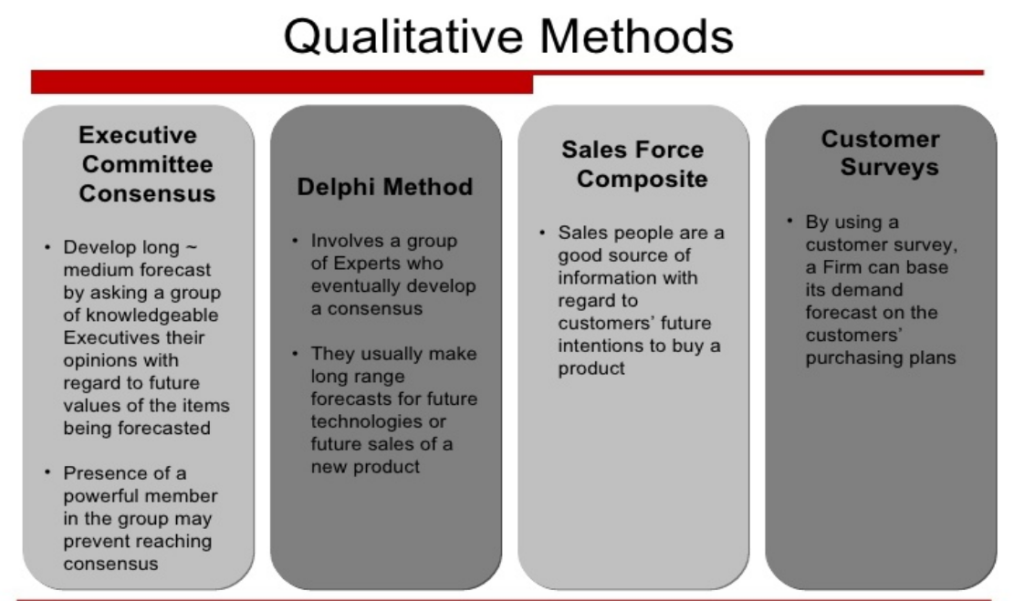
OPS FPX 5620 Assessment 4 Collaboration Tools for Supply Chain and Operations Departments
Student Name
Capella University
OPS-FPX5620 Supply Chain Foundations and Management
Prof. Name
Date
Department Roles and Their Value in the Supply Chain
The three key departments for this project are marketing, sales, and purchasing, as they will add the most value. Their collaboration will ensure a seamless transition to the future state with minimal delays, enabling Mainland Tools to stick to the proposed timeline. The following analysis will outline these departments’ roles internally and externally and highlight their contributions to the supply chain.
Marketing
Internally, the marketing department is tasked with conveying the corporate message in a way that fosters employee buy-in. This involves clearly explaining upcoming products with a detailed message covering what will be sold, why the customer needs it, and how it will be sold. By sharing this information and maintaining transparency, employees will understand how their efforts contribute to the end goal. This knowledge will also flow to other departments like sales and purchasing. Sales teams will know which products and services to focus on during customer interactions, and purchasing will be aware of which products to source and when. Externally, marketing’s role extends to tailoring messages for customers to guide their buying behaviors. By highlighting the benefits of new products, marketing educates customers on how a purchase will add value to their organizations. Emphasizing the expertise of staff and the value of the company’s supply chain network is crucial. For instance, Coca-Cola’s ad campaigns often showcase the product while offering glimpses into the organization to demonstrate intrinsic value.
Sales
Sales associates represent the company and build relationships with customers. They further articulate and reinforce the potential benefits outlined by marketing. The sales force plays a critical role in communicating the business’s value to the market and driving cash flow, essential for company survival (Hawkins, 2016). Their responsibilities include converting potential customers into actual ones and retaining existing business (fiveCRM, n.d.). Internally, the sales team acts as a link to the outside world, providing feedback on whether marketing strategies and product offerings align with customer needs. They can also anticipate upcoming orders and collaborate with operations staff to prepare materials and logistics. Providing order forecasts helps internal staff prepare effectively and deliver the best service possible, reducing costs by minimizing surplus inventory (Chambers, 1971).
Purchasing
The purchasing department is crucial for sourcing materials required for production, ensuring they are obtained at reasonable costs, delivered on time, and meet quality standards. Like the sales team with customers, purchasing must build rapport with vendors and suppliers to establish a reliable network. This department evaluates supplier performance, provides feedback, and encourages improvements that benefit the entire supply chain. Purchasing also collaborates with sales and marketing to proactively order materials expected to be in higher demand due to new product releases. Additionally, they communicate any potential delays to the sales team, equipping them with information for customer updates.
Forecasting Models
There are two primary forecasting methods: qualitative, which relies on intuitive or judgmental assessment when data is limited, and quantitative, which is based on historical demand (NC State University, 2011). Effective forecasting enables an agile organization that can adapt to customer needs without frequently restructuring. For instance, accurate production and inventory forecasting can lead to lower safety stocks and significant cost savings (Chambers, 1971). For Mainland Tools, a combination of Sales Force Composite and Time Series Models is recommended.

The Sales Force Composite method uses information from the sales team, providing insights into customer purchase intentions (Subramaniam, 2009). The Time Series Model analyzes trends, seasonal variations, and cyclical factors affecting demand (Subramaniam, 2009). This combined approach will improve decision-making and planning by offering more comprehensive information, allowing internal staff to prepare materials and manage inventory effectively, enhancing customer satisfaction.

Forecasting and Decision-Making: Advantages of Increased Collaboration
Combining qualitative and quantitative forecasting methods results in more informed decision-making. This approach allows management to integrate information from across the supply chain, offering a holistic view of the company. Understanding the impact of decisions on various departments and anticipating potential ramifications is crucial. Enhanced collaboration between departments improves information sharing and data accuracy. As noted in Assessment 3, it is essential to view the organization comprehensively and recognize the potential domino effect of decisions across the supply chain. For example, if the sales forecast indicates low customer interest in a new product despite marketing efforts, Mainland Tools may need to adjust purchasing and production plans. Conversely, if customer demand exceeds expectations, adjustments must be made to accommodate the increased orders.
Collaboration Tools
Thompson Tools currently uses Microsoft Office Suite, but a new collaboration tool is necessary to enhance teamwork across branches. The selected tool should integrate with existing systems and facilitate communication with Mainland Tools in China.
SharePoint
SharePoint is a suitable next step for those familiar with Microsoft Office, simplifying implementation and integration with existing tools. It allows document storage and access by all team members, with customizable authorization levels for reading or editing (Professional Advantage PTY Ltd., 2014). Multiple users can edit files simultaneously and communicate via instant messaging within files. SharePoint is designed for small businesses and can be accessed via an app, though it has a somewhat clunky interface and raises concerns about intellectual property protection. Membership costs range from $5 to $20 per month per user or can be included in an Office 365 subscription at $99.99 per user annually (Professional Advantage PTY Ltd., 2014).
Planner
Microsoft Planner is designed for task management, allowing task creation, assignment, and collaboration (Keep Productive, 2019). It provides progress charts and status updates, aiding both staff and management in tracking productivity and identifying bottlenecks. The modern interface of Planner requires more extensive training compared to SharePoint but offers a user-friendly experience once learned. Planner is available through Office 365 for $99.99 per user per year, with a monthly cost of $8.33 (Keep Productive, 2019).
TEAMS
Microsoft TEAMS focuses on creating teams and enhancing communication, offering a middle ground between SharePoint and Planner. It features a dynamic interface and social components such as gifs and emojis for team communication (Learnit Training, 2019). TEAMS is also available through Office 365 at $99.99 per user annually. TEAMS and SharePoint are often used together for a comprehensive collaboration tool, though they may lack some desired features (Zelfond, 2019).
The optimal solution for the organization would combine SharePoint and Planner to create a collaborative platform with project management features. Both tools, available through Office 365, will ensure seamless implementation and integration due to their Microsoft Office compatibility.
Ethical and Legal Implications of Collaboration Tools
The primary concern with collaboration tools is securing intellectual property. In countries like China, where intellectual property laws may not be strictly enforced, protecting confidential information is crucial. Ethical considerations include safeguarding non-disclosure agreements and classified documents. Security measures should include multi-factor authentication, authorization, and encryption (Kennedy & Mighell, 2018).
Conclusion
Effective collaboration among different components of an organization and its supply chain is vital for growth and success. Emphasizing key departments and their roles in achieving company goals enables employees to understand their impact and the broader picture. Utilizing tools like SharePoint and Planner to facilitate communication and information sharing can enhance the flow of information, products, and capital, ultimately improving sales and profitability. Teamwork is essential for achieving these goals.
References
Chambers, J. C. (1971, July). How to choose the right forecasting technique. Harvard Business Review. Retrieved from https://hbr.org/1971/07/how-to-choose-the-right-forecasting-technique
fiveCRM. (n.d.). The importance of a sales team. Retrieved from https://fivecrm.com/the-importance-of-a-sales-team
Hawkins, G. (2016, June 15). Sales is still the most important role in every business. LinkedIn. Retrieved from https://www.linkedin.com/pulse/sales-still-most-important-role-every-business-graham-hawkins
Keep Productive. (2019, July 4). Microsoft Planner 2019 review: Office 365 project management. Retrieved from https://www.youtube.com/watch?v=JxXcQ7LQj4Y
Kennedy, D., & Mighell, T. (2018). The lawyer’s guide to collaboration tools and technologies: Ethics, security, and other practical issues. American Bar Association. Retrieved from https://www.collegeoflpm.org/assets/docs/COLPM%202018%20Handout%20-%20Kennedy%20and%20Mighell%20-%20Collaboration%20Security%20-%20Chapter%2030%20Excerpt.pdf
Learnit Training. (2019, September 20). Microsoft Teams tutorial. Retrieved from https://www.youtube.com/watch?v=2zB2jiCxxuQ
NC State University. (2011, January 19). Forecasting methods. Supply Chain Resource Cooperative. Retrieved from https://scm.ncsu.edu/scm-articles/article/forecasting-methods
Professional Advantage PTY Ltd. (2014). How to collaborate with SharePoint 2013. Retrieved from https://www.youtube.com/watch?v=LLQyJxkZjiY
Subramaniam, A. (2009, December 6). Forecasting techniques. Retrieved from https://www.slideshare.net/anandsubramaniam/forecasting-techniques-2663882
OPS FPX 5620 Assessment 4 Collaboration Tools for Supply Chain and Operations Departments
Zelfond, G. (2019, August 28). Microsoft Teams vs. SharePoint. Sharepoint Maven. Retrieved from https://sharepointmaven.com/microsoft-teams-vs-sharepoint/
Get Capella University Free MBA Samples
HRM FPX 5025
HRM FPX 5122
HRM FPX 5310
LEAD FPX 5210
MBA FPX 5002
LEAD FPX 5220
MBA FPX 5006
MBA FPX 5008
